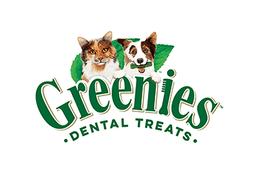The Komondor, with its iconic corded coat, is a breed that instantly turns heads. Often referred to as the "mop dog," this large and loyal guardian hails from Hungary, where it was bred to protect livestock. Don't be fooled by their unique appearance—Komondorok are strong, intelligent, and fiercely devoted to their families. Known for their calm yet watchful temperament, they make excellent companions for experienced dog owners who appreciate their independent spirit and protective nature.
Komondor Dog Breed Facts & Characteristics
| Dog Breed Facts & Characteristics | Details |
|---|---|
| Origin | Hungary |
| Also known as | Mop Dog, Hungarian sheepdog |
| Bred for | Livestock guarding |
| Size | Large; 65-80 cm in height |
| Weight range | 54-59 kg |
| Colours | White |
| Life expectancy | 10-12 years |
| Coat | Thick, corded double coat |
| Temperament | Calm, independent, protective |
| Exercise requirements | Moderate |
| Best suited for | Experienced owners, rural homes |
| Apartment friendly | Not ideal, better suited for large spaces |
Personality
The Komondor is a calm and composed breed, known for its unwavering loyalty and protective instincts. Originally bred to protect livestock, this working dog heritage has an innate sense of duty and thrive when they have a clear purpose. Their independent nature means they are capable of making decisions on their own, but this can sometimes come across as stubbornness. Without regular mental and physical stimulation, they may develop behavioural issues or become destructive out of boredom. While they are generally quiet, they won’t hesitate to alert their family with a deep bark if they sense anything unusual.
Komondorok form strong bonds with their families and are exceptionally devoted. However, early socialisation and training are essential to help them distinguish between genuine threats and everyday occurrences. With proper care, they can be affectionate, gentle companions who excel in their role as protectors.
Grooming
The Komondor’s famous corded coat is both striking and practical, originally designed to blend in with sheep and provide protection from predators. Grooming this unique coat requires a specialised approach. Brushing is not necessary, but the cords need regular separation to prevent matting. Bathing should be done only a few times a year, as drying their dense coat can take up to 24 hours.
Regular maintenance includes trimming the cords to prevent dirt buildup and keeping the eye and foot areas tidy. Nail trimming, ear cleaning, and daily dental care should also be part of their routine. Despite the high grooming demands, Komondorok shed very little, making them a relatively low-shedding breed.
Feeding
Feeding a Komondor requires attention to their size and activity levels. A diet formulated for large breeds with balanced nutrients is ideal. Puppies need food specifically designed for large-breed growth to support their development and prevent joint issues. Adult Komondorok typically do well on two measured meals a day to maintain a healthy weight and prevent bloat, a condition they are prone to.
Treats should be given sparingly, as excess calories can lead to obesity. Fresh, clean water should always be available, and consulting your vet about joint supplements can be beneficial as they age. Maintaining a consistent feeding schedule is key to keeping this breed fit and healthy.
Common Health Concerns
Komondorok are generally healthy and robust dogs, but like all breeds, they can be susceptible to certain health conditions. Hip dysplasia is one of the more common concerns, potentially affecting mobility as they age. Another condition to be mindful of is gastric bloat, which can sometimes occur in deep-chested breeds like the Komondor. While it sounds alarming, simple preventative measures—such as feeding smaller, more frequent meals and ensuring they rest after eating—can significantly reduce the risk.
Their thick, corded coat may also make them prone to skin issues, so regular grooming is essential to keep their skin healthy. Additionally, Komondorok may occasionally experience entropion, an eye condition where the eyelid rolls inward, which can be treated with veterinary care if needed. Routine vet visits, a balanced diet, and attentive care go a long way in ensuring your Komondor stays happy, healthy, and ready to protect the family they adore.
Did You Know?
Komondorok were bred to guard livestock, and their corded coats provided both camouflage and protection from predator attacks. During World War II, the breed was nearly wiped out as they were used to guard military installations. Today, they remain a rare and cherished breed, with fewer than 10,000 worldwide.
FAQs
Are Komondorok good with children?
Komondorok can be good with children if raised together and properly socialised. However, their protective instincts and large size mean supervision is essential, particularly with younger kids, to ensure safe and gentle interactions.
How much exercise does a Komondor need?
Komondorok are not high-energy dogs but require at least 30 minutes of moderate exercise daily, such as a walk or supervised playtime in a secure area. While they enjoy being active, they are equally content to lounge and keep a watchful eye on their surroundings.
Are Komondorok difficult to train?
Komondorok are intelligent but independent, which can make training a challenge. Early and consistent training with a calm and confident approach is crucial. They respond well to positive reinforcement but require clear leadership to understand their role in the family.
How do I maintain a Komondor’s corded coat?
A Komondor’s cords require regular separation to prevent matting, especially as they mature. Bathing should be done sparingly, and drying the coat thoroughly is essential to avoid skin issues. Professional grooming assistance may be helpful for first-time Komondor owners.
Can Komondorok live in hot climates?
Komondorok are better suited to cooler climates due to their dense coat. In warmer regions, it’s crucial to provide shade, fresh water, and avoid outdoor activities during the hottest parts of the day to keep them comfortable.
Are Komondorok good with other pets?
Komondorok can get along with other pets if introduced and socialised early. However, their guarding instincts may lead to tension with unfamiliar animals, so controlled introductions and training are recommended.
Do Komondorok bark a lot?
Komondorok are not excessive barkers but will use their deep bark to alert their family to anything unusual. Their natural guarding instincts mean they are more likely to bark when they sense a potential threat.
How much space does a Komondor need?
Komondorok thrive in homes with large outdoor spaces where they can move around freely. While they can adapt to smaller living environments with regular exercise, a securely fenced yard is ideal to meet their needs.
How long do Komondorok live?
Komondorok have a lifespan of 10-12 years. Regular vet check-ups, a balanced diet, and proper grooming help ensure they enjoy a long and healthy life.





























